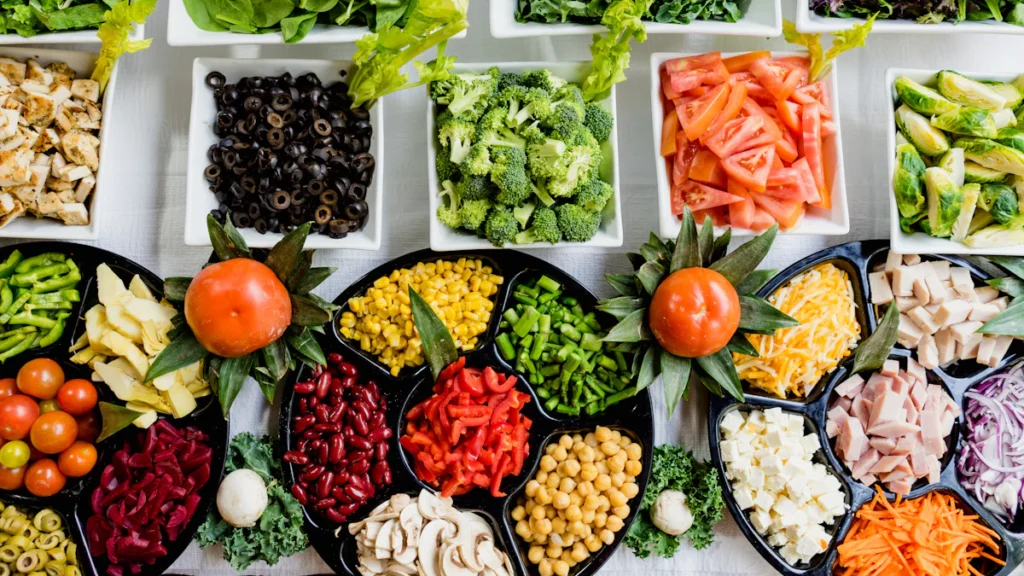Why Your Kidneys Need a Low Potassium Diet
If you’ve been diagnosed with kidney disease or told to monitor your potassium, meal planning can feel overwhelming. But here’s the good news: a low-potassium diet doesn’t have to be bland or restrictive.
With the right strategies, you can protect your kidneys while enjoying flavorful, satisfying meals. Let’s dive into the science, practical tips, and meal ideas that make this manageable.
The Kidney-Potassium Connection: What You Need to Know
Your kidneys are your body’s filtration system. When they’re healthy, they effortlessly remove excess potassium through urine. But if kidney function declines, potassium builds up in the blood, leading to dangerous complications like irregular heart rhythms or muscle weakness[1].
Key Science-Backed Facts:
- 85-90% of potassium is excreted by the kidneys, highlighting the importance of monitoring potassium intake.[2]
- Studies show reducing dietary potassium in CKD patients slows disease progression[3].
- Even mild kidney dysfunction (Stage 1-2 CKD) benefits from awareness of potassium levels.
Beyond Bananas: The Ultimate Low-Potassium Food Guide
Foods to Enjoy Freely (<200mg per serving)
- Fruits: Apples, berries, pineapple, cranberries (fresh or dried).
- Veggies: low potassium foods are essential for managing chronic kidney disease. Cucumber, bell peppers, iceberg lettuce, and green beans (boiled) are excellent low potassium food choices.
- Proteins: Eggs, chicken, shrimp, tuna (canned in water).
- Grains: White rice, refined pasta, sourdough bread.
Pro Tip: “Double-boiling” or soaking potatoes/vegetables reduces potassium by up to 50% [4].

High-Potassium Foods to Limit (>300mg per serving)
- Fruits: Bananas, oranges, cantaloupe, dried apricots.
- Veggies: Spinach, tomatoes, potatoes (raw), avocado.
- Other: Consult the National Kidney Foundation for more information on managing potassium levels. Beans, dairy alternatives (e.g., coconut milk), salt substitutes.
Surprising Culprits:
- A single medium baked potato packs 925mg of potassium – nearly 1/3 of the daily limit for CKD patients!
- “Low-sodium” products often replace salt with potassium chloride.
7-Day Low Potassium Meal Plan (Dietitian-Approved)
Day 1 Example:
- Breakfast: French toast (white bread) with maple syrup + apple slices.
- Lunch: Chicken Caesar salad (no croutons, sub low-potassium dressing).
- Dinner: Grilled salmon with lemon-dill sauce + steamed green beans.
- Snack: Rice pudding made with rice milk.
[Hypothetical link: “7-Day Kidney-Friendly Meal Plan”]
Cooking Hacks for Lower Potassium
- The Leaching Method:
- Slice potatoes/yams thinly.
- Soak in warm water for 4+ hours, changing water every 30 mins to reduce the amount of potassium.
- Boil in fresh water.
- Spice Swaps:
Replace high-potassium spices (e.g., chili powder) with safe options:- Basil, oregano, lemon zest, and garlic are great low potassium food options.
- Smart Substitutions:
- Milk: Rice milk (0.5mg potassium per cup vs. 366mg in cow’s milk).
Pasta: White noodles instead of whole wheat (63mg vs. 128mg per cup).
- Milk: Rice milk (0.5mg potassium per cup vs. 366mg in cow’s milk).
Navigating Challenges: Dining Out & Social Events
- At Restaurants: always inquire about the potassium content in dishes.
- Request steamed veggies (no sauces).
- Choose grilled meats over stews/soups (broths are high in potassium).
- Holidays:
- Thanksgiving Hack: Swap mashed potatoes for mashed cauliflower with garlic.
Real-Life Story: “I bring a low-potassium dessert to parties, like lemon gelatine cups, to help lower your potassium levels. No one notices, and I stay safe!” – Sarah, CKD patient.
When to Call Your Doctor: Red Flags
Even with careful planning, watch for:
- Muscle cramps can be a sign of high potassium levels in the body. or tingling in hands/feet.
- Fatigue that doesn’t improve with rest.
- Heart palpitations can indicate an imbalance in your potassium intake. or irregular beats.
Note: it’s crucial to monitor your potassium levels, especially if you have chronic kidney disease. Always consult your nephrologist before major diet changes. Your ideal potassium limit depends on lab results (e.g., eGFR, serum potassium).
FAQs: Your Top Questions Answered
A: Occasional small portions may be okay if your labs are stable. Track servings with an app like MyFoodTracker.
A: Look for ones co-authored by renal dietitians. Avoid fad diets.
A: Some antibiotics or blood pressure drugs increase potassium. Discuss alternatives with your doctor.
Key Takeaways: Protect Your Kidneys, One Meal at a Time
- Prioritize low-potassium fruits/veggies (apples > bananas).
- Master cooking techniques (leaching, boiling) to reduce potassium.
- Track your intake using apps or food journals.
- Partner with your healthcare team for personalized targets.
References
- National Kidney Foundation. (2023). Potassium and Your CKD Diet.
- He, F.J., & MacGregor, G.A. (2019). Beneficial effects of potassium on human health. Physiol Plant.
- Kovesdy, C.P. (2022). Management of Hyperkalemia in Chronic Kidney Disease. Nat Rev Nephrol.
- USDA FoodData Central. (2024). Potassium Content of Foods.

